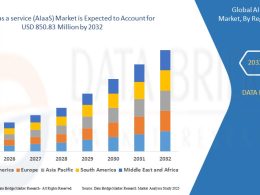Introduction
In 2024, around 90 percent of large enterprises had deployed or explored blockchain technologies. Fifty‑six percent of Fortune 500 firms worked on active on‑chain initiatives. The enterprise blockchain market grew from USD 9.6 billion in 2023 to over USD 145 billion by 2030, with broader blockchain‑based services expected to exceed USD 600 billion. Global blockchain markets may reach USD 393 billion by 2032. These compelling stats show enterprise adoption momentum. This article explains how Blockchain App Development Services help firms build enterprise-grade applications. We examine the technical challenges and the opportunity landscape.
What Are Blockchain App Development Services?
These services support enterprises in designing, developing, deploying, and maintaining decentralized applications. Providers manage smart contract coding, node setup, middleware, and frontend integration. They ensure regulatory compliance, auditing, performance, and security. Enterprises rely on these services to translate complex business logic into production-ready, scalable blockchain solutions.
Enterprise Use Cases and Technical Foundations
1. Common Use Cases
- Financial services perform tokenization, settlement automation, real‑time payments, and KYC/AML workflows.
- Supply chains use blockchain for traceability, provenance, and anti‑fraud validation.
- Healthcare and identity systems record immutably while protecting private data.
2. Technical Stack Overview
A typical enterprise blockchain app uses:
- Permissioned or hybrid blockchain network (e.g., Hyperledger Fabric, Corda, or Ethereum private nets)
- Smart contracts for business rules, written in Solidity, Go, or JavaScript
- Middleware and API layers for event indexing and off‑chain logic
- Frontend apps integrated with Web3 wallets or identity systems
- Monitoring dashboards, node hosting, and automated alerts
Challenge: Permissioned vs Hybrid Blockchain
Enterprises often prefer private or hybrid chain models for control and privacy. Private chains offer governance and access control. Hybrid chains combine private data with public audit trails when needed. Yet designing a hybrid architecture requires careful partitioning of on‑chain and off‑chain data. Developers must manage nodes, consensus rules, and interoperability layers.
Challenge: Scalability and Interoperability
Public chains suffer limited throughput and transaction delays. Enterprises often use hybrid or private networks to improve performance. Interoperability remains a key issue. Surveys show 43 percent of enterprises cite interoperability as their top concern when scaling blockchain systems. Enterprises may deploy across multiple blockchains, requiring bridges or cross-chain protocols like Chain link CCIP or SWIFT integrations . Providers must design cross-chain communication that validates oracles, signatures, and finality.
Challenge: Security and Governance
Smart contract security remains critical. Vulnerabilities include reentrancy attacks, improper access controls, and upgrade exploits. Enterprise networks still experience risk in upgradeable contract designs. Governance frameworks must enforce roles, multi‑party approvals, and audit trails. Deloitte found only 32 percent of media coverage on blockchain industry was positive, mainly due to governance failures and regulatory incidents. Weak governance has led to breaches that eroded trust for stakeholders.
Challenge: Regulatory and Compliance Complexity
Regulatory requirements vary across regions. Privacy laws like GDPR present challenges when data is immutable . Enterprises face uncertainty in jurisdictions with unclear blockchain rules. Surveys note over 40 percent of companies hesitate to adopt blockchain due to legal uncertainty . Providers must embed audit logs and KYC/AML processes, integrate identity verification services, and maintain data traceability for audits.
Challenge: Technical Expertise and Integration
Many enterprises lack internal blockchain expertise. Implementation requires new languages like Solidity or Go, plus tools like Hyperledger Fabric or Corda. They must integrate these systems with legacy infrastructure. A Reddit survey noted organizational barriers include lack of in‑house capabilities and unclear ROI. That drives demand for specialized Blockchain App Development Services to build and maintain these complex systems.
Opportunity: Market Growth and Demand
Enterprise blockchain market value has surged rapidly. Blockchain development services were valued at USD 7.48 billion in 2024 and may reach USD 51.25 billion by 2032 with a CAGR of 27 percent. Blockchain-as-a-Service (BaaS) has driven growth by simplifying enterprise implementation via platforms like AWS, IBM, Azure, and Oracle.
Major industries now adopt blockchain widely. Over 60 percent of large firms already investigate or deploy blockchain technologies. North America holds over 40 percent of revenue and Asia‑Pacific grows at 61.8 percent CAGR. Hybrid blockchains represent 42 percent of global deployments by now.
Opportunity: Real-World Deployments and Benefits
1. Financial Services
Banks tokenized bonds and shares totaling USD 412 billion. They also reduced fraud by 91 percent in trade finance consortiums . Cross‑border settlement time dropped from T+2 to T+0 using blockchain rails. JPMorgan and Visa use blockchain for payments and liquidity networks.
2. Supply Chain and Logistics
Maersk and Walmart track shipments with blockchain on TradeLens. Aura Blockchain Consortium logged over 40 million luxury goods for provenance validation. Blockchain traceability helped reduce recalls and improved transparency.
3. Asset Tokenization
Enterprises now tokenize real‑world assets, enabling fractional ownership and liquidity. Tokenized securities and private equity offerings grew into trillions in volume. Tokenization reduces manual paperwork and speeds settlements.
Also Read: How to Develop Blockchain Applications: A Comprehensive Guide
Opportunity: Technical Innovation
Enterprises benefit from integrating blockchain with AI. AI systems help detect anomalies, verify smart contracts, or analyze transaction patterns . Hybrid chains reduce data exposure while preserving privacy. Tokenization of real assets boosts access to illiquid investments . Zero‑knowledge proofs may further enable privacy in DeFi and identity systems. These trends create technical pathways for deeper enterprise integration.
Role of Blockchain App Development Services
Providers add value by offering:
- Requirements analysis and architecture design
- Smart contract development and testing
- Middleware, identity integration, and indexing layers
- Node operations and deployment automation
- Security audit and governance framework design
- Regulatory compliance features (e.g. audit logging, identity checks)
- Cross-chain integration strategies
- Monitoring dashboards with transaction metrics, latency, throughput
- Post‑launch maintenance, upgrades, security patches
These services reduce technical risk, accelerate delivery, and provide compliance frameworks.
Metrics Enterprises Use
Performance indicators include:
- Code audit scores (e.g. out of 100)
- Transaction gas cost or latency
- System throughput and uptime
- Interoperability success rate
- Regulatory compliance tracking
- Total value locked (TVL) in tokenized systems
- User activity metrics or active wallet adoption
These metrics help enterprises measure ROI, operational health, and technical performance.
Best Practices for Enterprises
Enterprises should:
- Choose service providers experienced in both private and public chain protocols
- Align solutions with data privacy regulations
- Adopt modular architecture for upgradeability
- Use open standards like ERC‑20, ERC‑721, or custom permissioned interfaces
- Design governance with multi‑party approvals and disaster recovery
- Provide developer training alongside implementation
Case Example: A Consortium Platform
One enterprise consortium engaged a Blockchain App Development Services team to implement a traceability network for luxury goods. They built a private blockchain network across 40 brands. Developers defined product identity smart contracts and metadata schema. They connected supplier systems to on-chain data. The system recorded over 40 million goods, ensuring provenance ahead of EU digital passport mandates.
Governance included board‑managed nodes, upgrade controls, and access permissions. Products gained provenance verification and improved secondary market trust. Brands avoided fraud and improved customer trust.
Also Read: Navigating Blockchain Innovation: What Crypto to Buy
Limitations and Challenges Ahead
Technical complexity hinders adoption. Integration with legacy IT remains costly. Regulatory clarity lags in many regions. Privacy regulations conflict with blockchain immutability. Interoperability across multiple chains remains unresolved. Many enterprises still lack internal blockchain talent. ROI must justify investment; executives demand clear outcomes. These issues remain hurdles even as opportunity grows.
Future Outlook
Blockchain’s role in enterprise tech appears strong. By 2027, 10 percent of global GDP may reside on chains. By 2030, 30 percent of financial infrastructure may run on blockchain networks. Enterprise investment in blockchain services grows rapidly. Hybrid and permissioned systems will dominate regulated industries.
Integration with AI, zero‑knowledge proofs, and digital identity may shift enterprise workflows. As tokenized asset markets mature, firms will demand secure, audited blockchain platforms. Skilled service teams will remain essential.
Conclusion
Blockchain App Development Services help enterprises overcome technical, regulatory, and integration challenges. They deliver robust, audited, scalable blockchain systems. These services enable enterprises to tokenize assets, improve traceability, automate workflows, and secure transactions.
Businesses face challenges such as regulation, privacy, interoperability, and legacy integration. Yet the opportunity remains vast. Adoption rates exceed 60 percent in major firms. Markets may exceed USD 600 billion in blockchain‑enabled services. Enterprises that engage reliable service providers can build production systems that meet technical, compliance, and business needs. Early adopters gain advantage in efficiency, transparency, and market innovation.












